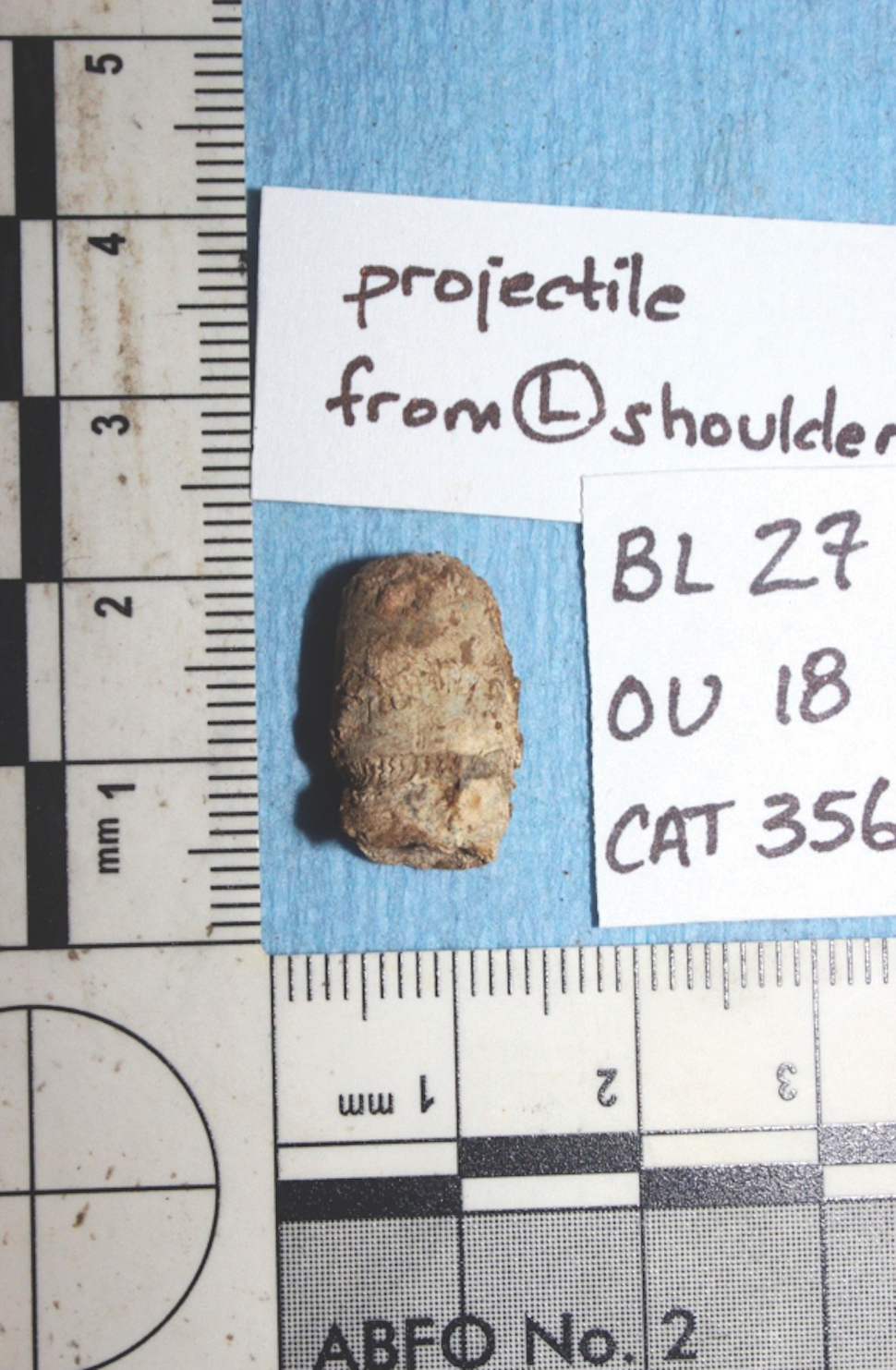
University of Florida forensic anthropologist Dr. Phoebe Stubblefield, who is helping lead the search for potential mass graves of victims of the 1921 Tulsa Race Massacre, discovered that one of the three sets of remains exhumed last week contained one victim with a gunshot wound. Since the 1990s, Stubblefield has been working to analysis skeletal remains since she authored her joint findings in the landmark 2001 Tulsa Race Riot Commission report.
Scientists believe the body is that of an adult male. The gunshot victim was buried in a plain casket in the cemetery’s original 18 Potter’s Field area. No definitive information on race or potential relation to the 1921 Tulsa Race Massacre can be confirmed at this time.
This marks the second body with a bullet in the head uncovered by the team of scientists researching the cemetery for possible race massacre victims. DNA analysis of the first gunshot victim continues in Utah with Intermountain Forensics, but their team has given no definitive information about the potential relation to the Race Massacre. Intermountain Forensics is a nonprofit DNA laboratory assisting Tulsa in identifying massacre victims buried in the unmarked graves.
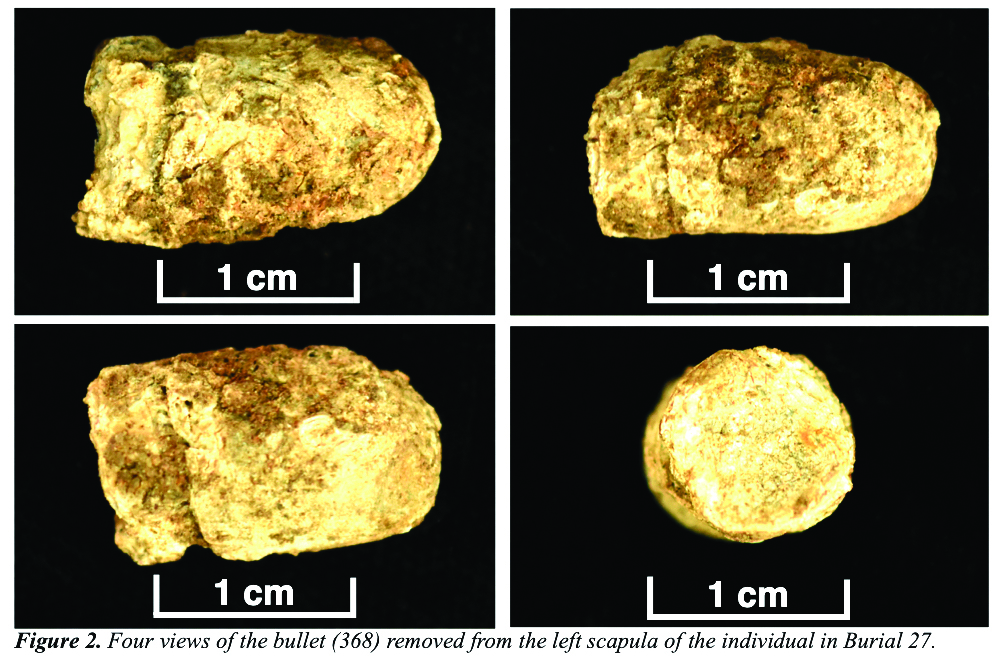
A Century Of Impatience
The city of Tulsa’s Nov. 11 announcement of the bullet hole discovery brought mixed reactions in the community of Black Tulsans closely following the probe into the mass graves. Many community members are expressing growing impatience with the pace of the inquiry into issues that occurred over a century ago but continue to plague the city and the Black community in particular.
A major backdrop to the investigation at Oaklawn is the ongoing lawsuit filed by the three last survivors of the 1921 Tulsa Race Massacre – 109-year-old Lessie Benningfield Randle, 107-year-old Viola Fletcher and 101-year-old Hughes Van Ellis. They are suing five plaintiffs – the City of Tulsa, Tulsa Regional Chamber of Commerce, the Board of County Commissioners for Tulsa County, Tulsa County Sheriff and the Oklahoma Military Department – for its prominent role in the destruction and delayed reconstruction of the Historic Greenwood District’s Black Wall Street.
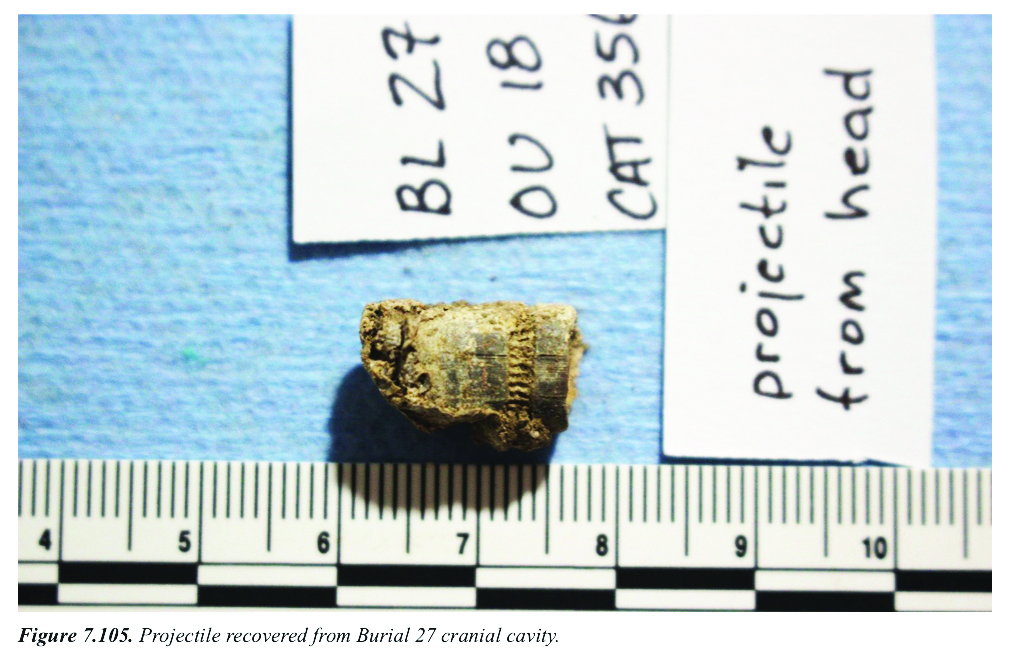
Generations of Inherited Trauma
The failure of the city to locate bodies has left hundreds of descendants of massacre victims forlorn and coping with the consequences of generations of inherited trauma.
For some, the discovery brings the city one step closer to finding concrete answers to the lingering painful question of what happened to the bodies of dozens of massacre victims.
“This discovery gives renewed spirit to the who mass graves investigation,” said J. Kavin Ross, the chairman of the 1921 Graves Investigation Public Oversight Committee and a Tulsa Race Massacre descendant.
The 24-member Oversight Committee was appointed by the city of Tulsa to give guidance to the probe. Ross shared in an interview with the Oklahoma Eagle that he feels that as excavations continue and forensic analysis keeps apace, more evidence will emerge. Eventually, the city and community will achieve a resolution to the unresolved saga of the victims of the massacre.
“No one said this would be a quick or easy process,” Ross added. “But I have confidence that the probe is moving in the right direction.”
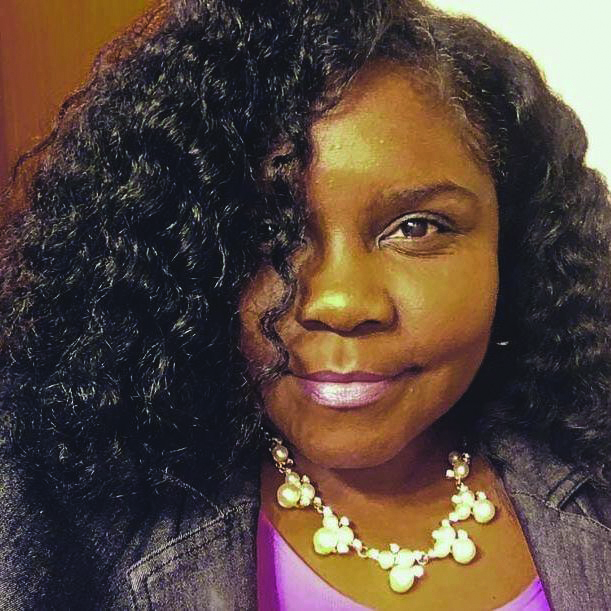
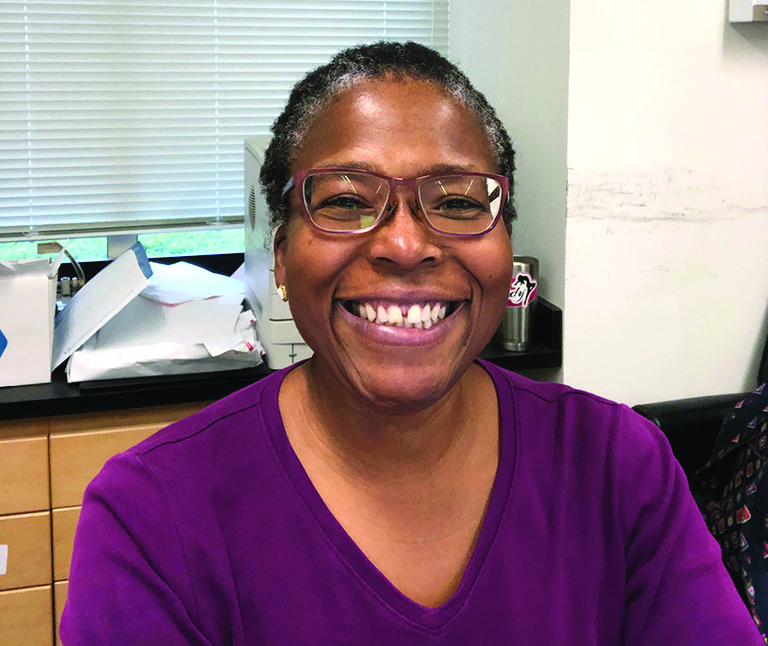
DR. PHOEBE STUBBLEFIELD, Interim Director of the C.A. Pound Human Identification Laboratory, University of Florida, is the lead forensic anthropologist conducting skeletal analysis of exhumed bodies during 1921 Tulsa Race Massacre mass graves excavations. PHOTO UNIVERSITY OF FLORIDA
Questioning Tulsa’s Commitment
Other Tulsans playing an active role as overseers of the investigation reacted with less optimism to the finding.
Kristi Williams, a well-known Greenwood activist, a descendant of race massacre victims and a member of the Public Oversight Committee is one of the skeptics. While the discovery of the new body with the bullet hole is helpful, Williams said, she is unconvinced of the city’s sincerity of commitment to getting to the bottom of the mass graves probe.
The fact that the investigation is designed to focus only on possible male victims of the massacre severely limits its scope, Williams said.
“We know there were women and children who were included among victims,” she explained. “If the investigation does not include them, how can the city claim they are doing a thorough investigation?
“It hurts my heart to know that children were involved and their stories are not being told.”
Williams also questioned whether the excavations cover the areas of Oaklawn where massacre victims are possibly buried.
She further questioned whether the city is employing the best excavation and forensics team to pursue the investigation. She and other members of the citizens’ committee suggested experts take part in the investigation, but the city rejected the recommended names.
Williams and other members of the Oversight Committee feel that the halfhearted efforts by the city call for federal oversight of the investigation. “I think it’s time to call in the US Department of Justice and the FBI,” she said.
Other members of the Oversight Committee interviewed by the Oklahoma Eagle concurred with Williams.
After a pause of several months, the city restarted the probe for mass graves on Oct. 26. Since then, 26 burials have been found, and four sets of remains have been exhumed and taken to the on-site osteology lab for further analysis and processing. One new exhumation (not the new gunshot victim) occurred in early November.
Work continues to safely uncover and exhume more sets of remains for analysis. The city of Tulsa plans to pause the excavations at the end of this week until after the upcoming holiday season.
City: Spirit Of Investigation Is Alive And Well
In a statement to the Oklahoma Eagle, the city of Tulsa defended its course of pursuit of the mass graves probe.
“From the beginning of this investigation, we promised we would go where the facts led us and that we would lean on experts and their fields of knowledge to lead this process,” the city said in a statement.
“The same spirit that started this investigation is alive and well, and work continues to find potential victims from 1921 not only during the current excavation work at Oaklawn Cemetery but wherever else the facts and scientific findings may lead us.”







